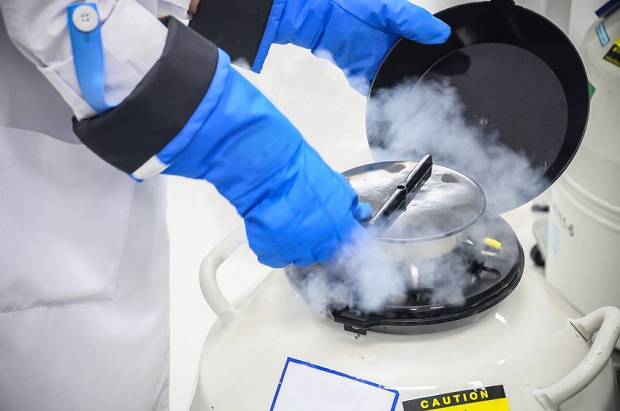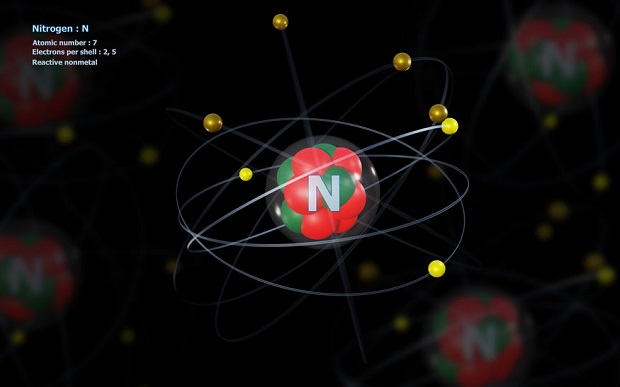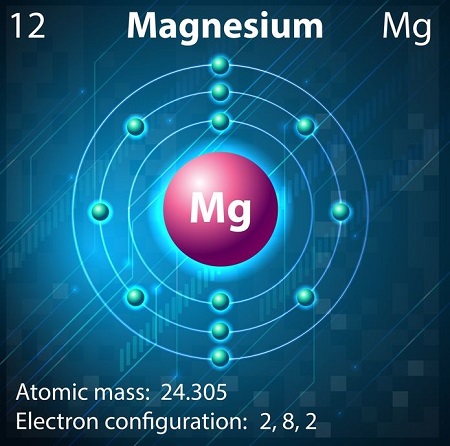Is Nitrogen a Gas?
Answer at a Glance: At standard conditions, nitrogen is a colorless, odorless, tasteless gas. Under extremely low temperatures nitrogen can be liquid and solid.
Dig Deeper
- What Is a Gas?
- Nitrogen Is Gas In Nature
- Nitrogen Can Be Liquid and Solid
- Solid Nitrogen
- Liquid Nitrogen
- Resources
What Is a Gas?
Chemists define a gas as a state of substance or matter that expands to assume the shape and volume of its container. Particles in a gas are well separated with no regular arrangement and vibrate and move freely at high speeds. [1]
Nitrogen Is Gas In Nature
For many, oxygen comes to mind when thinking of the atmosphere and the air we breathe. Surprisingly, the volume of the dry air in Earth’s atmosphere is only 20.95% oxygen, while nitrogen makes up 78.08%. The remaining gases include argon (.93%) and trace amounts of carbon dioxide, methane, nitrous oxide, and ozone. [2]
Nitrogen Can Be Liquid and Solid
Nitrogen gas can be cooled to form both liquid and solid states. However, the temperatures required for this to occur are incredibly low. Nitrogen becomes liquid at -196°C (-321°F) and turns solid at -210°C (-346°F). [3]
Solid Nitrogen
Solid nitrogen exists as ice in space, forming a large part of Pluto’s surface and the frozen nitrogen crust of Neptune’s moon Triton. [4] [5] Scientists also use it as a cryogen, a substance used to produce very low temperatures, in some applications such as cooling superconducting materials. [6]
Liquid Nitrogen
Liquid nitrogen, with its unique properties, finds a wide range of practical applications. These include fast-freezing foods for better quality upon thawing than traditional freezing methods. [7]
The role of nitrogen in medical procedures is significant. Medical professionals commonly use liquid nitrogen for procedures such as cryopreservation, which uses liquid nitrogen to store biological samples for extended periods, such as eggs and embryos. [8]
Because it will instantly freeze anything it touches, liquid nitrogen therapy, or cryotherapy, is commonly used to remove skin tags, warts, and diseased or cancerous tissue. This freezing process destroys the targeted tissue, making it a popular method for minor surgical procedures. [9]
Resources
- [1] Purdue University – Department of Chemistry – “States of Matter.“
- [2] NASA – “The Atmosphere: Getting a Handle on Carbon Dioxide.“
- [3] Farndon, J. (1999). Nitrogen. United States: Benchmark Books.
- [4] NASA – “Pluto Facts.“
- [5] NASA – “Triton.”
- [6] William B. McKinnon, Randolph L. Kirk, Chapter 40 – Triton, Editor(s): Tilman Spohn, Doris Breuer, Torrence V. Johnson, Encyclopedia of the Solar System (Third Edition), Elsevier, 2014, Pages 861-881, ISBN 9780124158450.
- [7] Aref, M. M. “The Present Status of Liquid Nitrogen Freezing of Foods.” Canadian Institute of Food Technology, vol. 1, no. 1, Jan. 1968, pp. 11–16, https://doi.org/https://doi.org/10.1016/S0008-3860(68)74443-3 UR.
- [8] Demaco Cryogenics – “Liquid Nitrogen: Uses and Applications.”
- [9] National Library of Medicine – Medline Plus – “Liquid Nitrogen.“






